I wrote a whole six paragraphs about local shopping. Then I deleted it, although unsure why. Just wanted to start fresh I guess.
Choosing gifts for the Grandbabies had me thinking about the delights of my own childhood, and what Christmas was like back then. Here are some images of things that were a part of my childhood.
The late 1940s and the 1950s ushered in an era of toys that were mass produced and advertised on radio and television. It was the dawn of corporate toy manufacturing in North America, which at that time was still tethered to the innocence of free enterprise. That tether has worn thin and broken.
Toys in the 1950s and 1960s
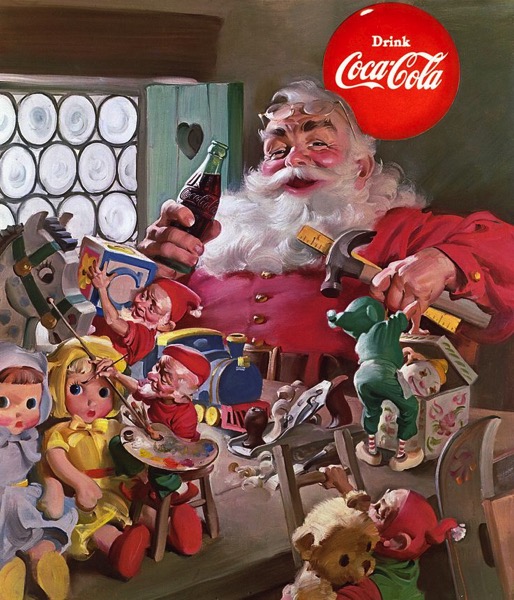 |
5 Things You Never Knew About Santa Claus and Coca-Cola
The Santa Claus we all know and love — that big, jolly man in the red suit with a white beard — didn’t always look that way. In fact, many people are surprised to learn that prior to 1931, Santa was depicted as everything from a tall gaunt man to a spooky-looking elf. He has donned a bishop’s robe and a Norse huntsman’s animal skin.
In fact, when Civil War cartoonist Thomas Nast drew Santa Claus for Harper’s Weekly in 1862, Santa was a small elflike figure who supported the Union. Nast continued to draw Santa for 30 years, changing the color of his coat from tan to the red he’s known for today.
Here, a few other things you may not have realized about the cheerful guy in the red suit.
1. Santa Has Been Featured in Coke Ads Since the 1920s
The Coca-Cola Company began its Christmas advertising in the 1920s with shopping-related ads in magazines like The Saturday Evening Post. The first Santa ads used a strict-looking Claus, in the vein of Thomas Nast.
In 1930, artist Fred Mizen painted a department-store Santa in a crowd drinking a bottle of Coke. The ad featured the world’s largest soda fountain, which was located in the department store Famous Barr Co. in St. Louis, Mo. Mizen’s painting was used in print ads that Christmas season, appearing in The Saturday Evening Post in December 1930.
2. Coca-Cola Helped Shape the Image of Santa
In 1931 the company began placing Coca-Cola ads in popular magazines. Archie Lee, the D’Arcy Advertising Agency executive working with The Coca-Cola Company, wanted the campaign to show a wholesome Santa who was both realistic and symbolic. So Coca-Cola commissioned Michigan-born illustrator Haddon Sundblom to develop advertising images using Santa Claus — showing Santa himself, not a man dressed as Santa.
For inspiration, Sundblom turned to Clement Clark Moore’s 1822 poem ” A Visit From St. Nicholas” (commonly called “‘Twas the Night Before Christmas”). Moore’s description of St. Nick led to an image of a warm, friendly, pleasantly plump and human Santa. (And even though it’s often said that Santa wears a red coat because red is the color of Coca-Cola, Santa appeared in a red coat before Sundblom painted him.)
Sundblom’s Santa debuted in 1931 in Coke ads in The Saturday Evening Post and appeared regularly in that magazine, as well as in Ladies Home Journal, National Geographic, The New Yorker and others.
From 1931 to 1964, Coca-Cola advertising showed Santa delivering toys (and playing with them!), pausing to read a letter and enjoy a Coke, visiting with the children who stayed up to greet him, and raiding the refrigerators at a number of homes. The original oil paintings Sundblom created were adapted for Coca-Cola advertising in magazines and on store displays, billboards, posters, calendars and plush dolls. Many of those items today are popular collectibles.
Sundblom created his final version of Santa Claus in 1964, but for several decades to follow, Coca-Cola advertising featured images of Santa based on Sundblom’s original works. These paintings are some of the most prized pieces in the art collection in the company’s archives department and have been on exhibit around the world, in famous locales including the Louvre in Paris, the Royal Ontario Museum in Toronto, the Museum of Science and Industry in Chicago, the Isetan Department Store in Tokyo, and the NK Department Store in Stockholm. Many of the original paintings can be seen on display at World of Coca-Cola in Atlanta, Ga.”
Source: http://www.coca-colacompany.com/holidays/the-true-history-of-the-modern-day-santa-claus
“A Baking powder submarine is a plastic toy submarine that dives and surfaces with the addition of baking powder. Baking powder submarines are sometimes misidentified as baking soda submarines, however baking soda alone does not react when placed in water.
In 1953 Benjamin and Harry Hirsch, two brothers in a cosmetics company discovered that the gas bubbles from baking powder could make a toy submarine dive up and down in fresh water. They sold their idea to the Kellogg’s breakfast cereal company in 1954. Buoyed by the popularity of the first American atomic submarine USS Nautilus commissioned in that year, the 25 cent and one cereal boxtop four and one half inch plastic ship model prize had one million produced by May. A two and one half inch version was also produced to be used as a cereal box prize.
The same principle was later used for toy frogmen using baking powder in a container on the figure. However some cereal prizes were cartesian divers which did not require baking powder.”
Source: http://en.wikipedia.org/wiki/Baking_powder_submarine
Further Information: http://torgo.org/bpsubs/
Dinky Toys:
I have three brothers and they loved Dinky Toys. They seemed to be everywhere when I was a kid and I was always stepping on them (the Dinky Toys, not my brothers).“Dinky Toys is the brand name of a range of diecast and other toys manufactured by the Meccano Company and its overseas subsidiaries. The Dinky Toys brand was first introduced in April 1934. However, the story of the Meccano Company goes back much further.
Meccano Limited was founded in 1908 by Frank Hornby. Meccano was an engineering-oriented construction kit and he had originally developed it for his sons and patented Meccano in 1901. Over time, see timeline, various subsidiaries were opened; initially France. The company published a magazine for Boys, Meccano Magazine, this started in 1916. Also over the years the Company diversified into quite a few products, the most significant being Hornby Trains (and later Hornby Dublo, 1938) and then Dinky Toys.
There are links here to an overall timeline of the history of Meccano Limited and then three links to more detail concerning the development of Dinky Toys from origins back as Hornby Series Modelled Miniatures in 1931 through to the demise of Meccano as a going concern in 1979.
Trace the history of Dinky Toys following the Hornby Railway Accessories from 1924 to Modelled Miniatures that were to become Dinky Toys to the Early post war years to the takeover of Meccano by Tri-ang/Lines Brothers and the final years to 1979.”
Source: http://www.dtcawebsite.org/dinky-toys-and-meccano-ltd
Toy Doll Cradle:
The plastic doll cradle was brightly coloured and my sister and I really enjoyed them. All too soon they broke apart, but we had a lot of fun before they did.
Doll House:
I had a doll house just like this, loved it!“Steel dollhouses, first introduced about 1948, dominated the 1950s decade. Again depending upon one’s point of view, the disadvantage was that the printed interior decorations and architectural components left little to the imagination. One also had to accept the rendition of three-dimensional forms on what what obviously a flat shiny surface. But one can argue that they are the descendants of a long tradition of lithographed interiors, for example, this dollhouse history began with the American McLoughlin rooms of 1894 with their very fine interior renderings 1890s . The enemy of the earlier rooms and houses was rough handling resulting in bent or marked surfaces of the cardboard or fibreboard, whereas the enemies of the metal houses were dinging and rust. Because most of the latter houses are printed with the maker’s name and place, identification problems are less prevalent.”
Source: http://www.mckendry.net/DOLLHOUSES/1950s.htm
Doll Tiny Tears:
These dolls wept tears, which was the height of wonder for us.The very first, 1965, Tiny Tears doll was 16″ high with fine pale blonde hair and blue sleeping eyes. The back of her neck was marked ‘Made in England 16D’. She had delicate features, a small, pursed mouth, wore a turquoise or pink gingham romper and came with a bib, bottle and a dummy. This doll proved so popular that a year later Palitoy produced a smaller version, Teeny Tiny Tears, just 12″ high. Shortly after, Palitoy became part of the American company, General Mills Inc., who decided to keep the Palitoy name. Sometimes today collectors come across a baby doll similar to Tiny Tears but with a smiling face. This is Baby Flopsy, issued around the same time and advertised as being able to wear Teeny Tiny Tears outfits. She was sold wearing just a nappy.
Original Tiny TearsFive years after the initial launch, Tiny Tears was given a complete revamp which made her appear older; her delicate face was more rounded, her eyes were larger, her mouth wider and her hair was thicker. This is the face which most people remember, and it was to stay the same for the next fifteen years. She was marked ‘Palitoy’ on the back of the neck. One of her most popular outfits was a white nylon dress with blue and pink smocking on the yoke, and she was sold in this from 1973 to 1980, at a recommended retail price of œ7.99.
Tiny Tears dolls came with guarantees and gift certificates, as well as instructions on how to feed the doll and make her cry. The tear mechanism was activated by ‘feeding’ the doll with water, quickly inserting a dummy to prevent the water trickling out of the mouth, and then squeezing her tummy hard. She would wet her nappy at the same time, probably due to shock! To mark the next decade, Tiny Tears was given a pretty cotton dress with a floral design in either pink or blue, and, at first, matching pants and bonnet, though soon a nappy was substituted for the pants while the bonnet was discarded.Tiny TearsThe eye-catching box read ‘She’s as cute and cuddly as a real baby. Just like a real baby she cries real tiny tears.’ The decade also heralded a new addition, the little Teeny Weeny Tiny Tears, just 9″ tall, who is now extremely popular with collectors and quite hard to find.”
Source: http://www.worldcollectorsnet.com/features/tinytears/
Paper Dolls:
My sister and I loved paper dolls, and played with them for hours and hours and hours.“Paper dolls have existed as long as there have been paper and creative people to apply images to it. Paper figures have been used in ritual ceremonies in Asian cultures for many centuries. An ancient Japanese purification ceremony dating back to at least A.D. 900 included a paper figure and a folded paper object resembling a kimono which were put to sea in a boat. The Balinese have made shadow puppets of leather and of paper since before Christ, although we are aware of no evidence that they made separate costumes for these figures. Many dolls have been made of paper in the Orient, whether folded or otherwise constructed, but these are three-dimensional and not flat….
Saalfield Publishing Company
The 1940s and 1950s saw great popularity of manufactured paper dolls by many fine artists. The Saalfield Publishing Company had Maybell Mercer, Betty Bell, Ann Kovach and Jean Morse in the 1930s and 1940s, Mary Knight in the 1950s, and Irene Geiger in the 1970s. Fern Bisel Peat created many charming books from 1931 to 1937. Ruth Newton’s animals in Costumes are memorable. Rose O’Neill’s dear Scootles and Kewpie made a delightful book in 1936. George and Nan Pollard painted celebrity dolls in the 1950s and 1960s for Saalfield as well as for Samuel Lowe. Their lifelike art extended to other subjects as well. Louise Rumely is remembered for her precious baby paper dolls in the early 1960s, as well for her cherub-filled Swan Soap ads of the 1940s and 1950s. Ethel Hays Simms is known for her Raggedy Ann and Andy series from the 1940s to the 1960s. Other artists can be studied in Mary Young’s Paper Dolls and Their Artists, books I and II.
Samuel Lowe Publishing Company
A few of the popular artists of the Samuel Lowe Company are Merily Sharpe, who has been compared to Queen Holden in style; Pelagie Doane, who was also admired as a children’s book illustrator; and the Henderson sisters, Doris and Marion, who did large groups of children in play settings. Fern Bisel Peat also painted several books for this company in the 1940s, as did Queen Holden in the 1960s. Jeanne Voelz did celebrity dolls for Lowe and for Saalfield, as well as the irresistible Cuddles and Rags and other cute characters.
Whitman Publishing Companies
Besides the famed Queen Holden, in the 1940s and 1950s Whitman also published the works of Hilda Miloche, whose style is immediately recognized by collectors. (Some of her paper dolls appeared in paper doll story books of the popular Little Golden Books). Avis Mac (1930s) and Judy Stang (early 1970s) did sweet children dolls. Ruth Newton also did her cute animals for Whitman, and Neva Shultz was prolific in the 1960s, doing twenty-eight books. See Mary Young’s books for more information on the Whitman artists.
Merrill Publishing Company
Miriam Pendleton Kimbal created books filled with children, as well as the highly-sought-after Gone With the Wind (1940), which can sell for more than $400 today. Merrill enjoyed the popularity of Louise Rumely’s sweet babes, including her Angel Babies. Florence Salter’s animals are often confused with Ruth Newton’s, as both artists dressed puppies and kittens in paper-doll style. E.A. Voss, noted for her children’s book illustrations, did a few paper dolls for Merrill, as did the popular magazine illustrator Maud Tousy Fangel.
Western Publishing, Racine, Wisconsin
Thanks to Western Publishing of Racine, Wisconsin, many of Disney’s characters became paper dolls. In addition, Doris Lane Butler did young lady dolls (1940s), and Rachel Taft Dixon was loved for her storybook, historical, and folk dolls (1930s). Ethel Bonney Taylor gave us Blondie (1941) as a paper doll. During the 1990s Western Publishing brought us our favorite Disney characters as paper dolls, including Snow White, Pocahontas, The Little Mermaid, Beauty and the Beast and others. These books are still fairly easy to find on eBay and via secondary market sellers.”
Source: http://www.opdag.com/History.html
Hula Hoops:
I remember when these hit the market. At first they could not be had for love nor money, so popular that every store was sold out. I remember being in the car with my Mom, who drove by a hardware store with a few on display. She turned the car around and went right back and bought one. Five children, one hula hoop, there were lineups, lol.“A hula hoop is a toy hoop that is twirled around the waist, limbs or neck. The modern hula hoop was invented in 1958 by Arthur K. Melin and Richard Knerr, but children and adults around the world have played with hoops, twirling, rolling and throwing them throughout history. Hula hoops for children generally measure approximately 71 centimetres (28 in) in diameter, and those for adults around 1.02 metres (40 in). Traditional materials for hoops include willow, rattan (a flexible and strong vine), grapevines and stiff grasses. Today, they are usually made of plastic tubing.[1]”
Source: http://en.wikipedia.org/wiki/Hula_hoop
Wooly Willy:
This toy was based on metal filings and a magnet tipped “pencil”. Captivating.“Wooly Willy is a toy in which metal filings are moved about with a magnetic wand to add features to a cartoon face.[1] The toy was originally manufactured in Smethport, Pennsylvania and was launched on the toy market in 1955. It remains in production as of 2010…
Wooly Willy is “a face printed on cardboard under a bubble of plastic filled with metal filings that could be moved with a magnetic wand to create features like beards, mustaches, and shaggy eyebrows on the face.”
Creation
The brothers Donald and James Herzog developed Wooly Willy while working in the Smethport Specialty Company, their father’s toy production company, in Smethport, Pennsylvania, United States. The company produced tops, horseshoe-shaped magnets, and other toys until the vacuum forming devices of the 1940s and 1950s allowed the company to manufacture air-tight containers of transparent plastic. Such containers kept Wooly Willy’s metal filings from leaking out and moisture that would rust the metal from leaking in. The artwork for the first Wooly Willy was created by artist Leonard Mackowski of nearby Bradford, Pa. His signature is found hidden in the grass on the reverse side. The Broadfield Toy Co., Inc., of Hempstead, New York, United States created a similar toy called Whiskers in 1925.[3]
Launch
Priced at US$0.29, Wooly Willy was successfully launched on the market in 1955.[1] A buyer for G. C. Murphy dime store chain initially purchased six dozen of the toy and expected not to sell them for a year. The buyer called Herzog just two days later and ordered a dozen thousand for nationwide distribution.[4] F. W. Woolworth Company also distributed the toy. More than 75 million Wooly Willies have been sold”
Source: http://en.wikipedia.org/wiki/Wooly_Willy
Play-Doh:
Play-Doh has been around for a very long time!“Play-Doh modeling compound started out as wallpaper cleaner. Joe McVicker learned from a teacher that kids usually found modeling clay too hard to manipulate. Discovering that the squishy cleaning product he manufactured could substitute, McVicker shipped some to the school. After teachers and kids raved, he offered to supply the product to all Cincinnati schools. More rave reviews followed. McVicker showcased the modeling clay at a national education convention in 1955, and word spread to Macy’s and Marshall Field’s. By 1956, the wallpaper cleaner had become Play-Doh. A year later, the manufacturer offered a softer Play-Doh in primary colors. Kids mixed these to make other colors, ending inevitably in brown. Captain Kangaroo endorsed Play-Doh, and so did Miss Frances from Ding Dong School. Play-Doh Pete appeared on product cans in 1960. The Fun Factory let kids extrude the material into interesting shapes, making mock hair, colorful spaghetti, and pretend ice cream that wouldn’t melt. In the 1980s, Play-Doh expanded its palette to eight colors. Later versions sparkled with glitter, glowed in the dark, or smelled like shaving cream. Recent estimates say that kids have played with 700 million pounds of Play-Doh.”
Source: http://www.toyhalloffame.org/toys/play-doh
Roller Skates:
I remember these so well. They seemed impossible to keep attached securely to shoes, always loosening and coming off at very inconvenient moments.
Slinky:
From the moment we saw one of these in the Simpson Sears Catalogue, we wanted one!“Mechanical engineer Richard James invented the Slinky by accident. In 1943, he was working to devise springs that could keep sensitive ship equipment steady at sea. After accidentally knocking some samples off a shelf, he watched in amazement as they gracefully “walked” down instead of falling. Along with his wife Betty, James developed a plan to turn his invention into the next big novelty toy. Betty combed the dictionary for an appropriate name and came up with “Slinky.” James designed a machine to coil 80-feet of wire into a two-inch spiral. The couple borrowed $500 to manufacture the first Slinkys. Initial sales proved sluggish but soared after Gimbels Department Store in Philadelphia allowed demonstrations for Christmas 1945. The first 400 Slinkys sold within minutes. An advertisement with a memorable jingle familiarized a national customer base. “What walks down stairs alone or in pairs and makes a slinkety sound? A spring a spring, a marvelous thing. Everyone knows it’s Slinky!” Slinkys glided effortlessly down stairs on television, but alas most household steps proved too tall and wide for long descents. Still, at the end of the 20th century and 250 million Slinkys later, people continued to buy them.”
Source: http://www.toyhalloffame.org/toys/slinky
Tinker Toys:
Another building toy that was all kinds of fun, brothers and sisters enjoyed this one.“Tinkertoy
Stonemason Charles Pajeau and partner Robert Petit dreamed up the “Thousand Wonder Toy” in the early 1910s after watching children create endless abstract shapes with sticks, pencils, and old spools of thread. Adding holes on all sides of a round wooden wheel sized for sticks included in the set, they named their creation Tinkertoy. Shop owners successfully promoted the toy with elaborate store displays. Tinkertoy joined a host of other construction toys in the early 20th century, including Lincoln Logs and Erector Sets, helping kids to learn by exercising what we now think of as “spatial intelligence.” Originally intended for younger boys, after 1919 Tinkertoys attracted budding engineers through the addition of an electric motor. The toys even came with instruction for creating elaborate mechanical “tool,” such as printing presses, lathes, airplanes, and power saws. The postwar boom years of the 1950s finally brought color to the classic wooden toy. Playskool acquired Tinkertoy in 1985 and redesigned the toy in 1992 in honor of its 80th anniversary. No longer the wooden rods and spools of old, the new version featured brightly colored plastic parts, with each set designed to create particular objects.”
Source: http://www.toyhalloffame.org/toys/tinkertoy
Building Bricks:
My Granny had a set of these bricks, little windows, bricks, flexible plastic roofs. The round container was battered and worn, but held strong through the years.“Minibrix were made by the Premo Rubber Company, Petersfield, Hampshire. The bricks locked together with moulded press-in studs and were a forerunner to Lego. Bayko Bricks were made of thermoset Bakelite and held together with rods and ties, patented in 1933 by the Plimpton Engineering Company, Liverpool. There were six sets to buy each of which included a number of architectural features and children could buy conversion sets to upgrade which ever set they had.”
Source: http://www3.hants.gov.uk/childhood-collections/toys/history-toys/models-and-miniature-toys.htm
View-Master:
One of these resided at my Granny’s house. We loved it, but had to take turns. So much to do, so little childhood to do it in!“SAWYERS
The View-Master has a long history, dating back to the late 1930’s in Portland, Oregon, USA. It was initially conceived by William Gruber and Harold Graves. Graves, who was president of Sawyers Photographic Services saw the potential of Gruber’s camera rig he has developed for taking stereo photographs. The pair formed apartnership and the View-Master was born in 1938.
Initially it was intended that the View-Master be an educational tool, primarily aimed at adults, but as time developed the appeal of the View-Master soon spread to other areas, one of the more notable being children’s entertainment.
The US Military were keen advocates of the View-Master and had specially commissioned sets of reels produced to aid with artillery spotting and aircraft identification during World War II. They purchased many millions of reels for this purpose, together with 10’s of thousands of Model B viewers.
Sawyers didn’t have the market to themselves and the Tru-Vue Company was a serious rival. In 1951 Sawyers purchases the Tru-Vue Company and importantly also obtained the rights to present Disney characters on their reels.
GAF
In late 1966 View-Master was purchased by GAF (General Aniline & Film Corporation), a company mainly concerned with film processing and cameras. By the 1970’s the Photo Consumer Division was having a great deal of success with the View-Master product, so much so that the other operations were discontinued. Gaf(uk)ltd introduced blister packs, referred to internally as ‘tricards”. The tricard concept was initially conceived in Europe and only later adopted in the USA.”
Source: http://www.viewmaster.co.uk/htm/history.asp
Toy Tractor:
My brother had one of these, it was metal and heavy. Throwing your toys was a very serious thing back then, not that he threw his tractor of course.
Army Men:
All three of my brothers loved these little figures. They, like Dinky Toys, were everywhere, in the laundry basket, in the house plants, on the floor… who could forget them.“In 1938, the Bergen Toy and Novelty Co. began selling an inexpensive line of minuscule, monochrome plastic soldiers. The 2-in. American figures were produced in U.S. Army green and molded in a variety of action poses — a little boy’s war fantasy come true. Sold in large plastic bags, demand for the little green men rose in the 1950s thanks to a boom in plastics manufacturing and a lead-poisoning scare that made the metal versions less appealing. Soon the company was manufacturing enemy forces too: German troops were molded in grey, Japanese forces in yellow. Though the little warriors have undergone several changes over the years, their most famous identity is as World War II–era soldiers with “pod feet” attached to keep them standing during battle.”
Source: http://content.time.com/time/specials/packages/article/0,28804,2049243_2048649_2049009,00.html
Roy Rogers:
One of the media heroes of my childhood. He and Dale Evans were fixtures.“Roy Rogers (born Leonard Franklin Slye November 5, 1911 – July 6, 1998) was an American singer and cowboy actor who was one of the most popular Western stars of his era. Known as the “King of the Cowboys”, he appeared in over 100 films and numerous radio and television episodes of The Roy Rogers Show. In many of his films and television episodes, he appeared with his wife Dale Evans, his golden palomino Trigger, and his German Shepherd dog Bullet. His show ran on radio for nine years before moving to television from 1951 through 1957. His productions usually featured a sidekick, often Pat Brady, Andy Devine, or George “Gabby” Hayes. In his later years, Rogers lent his name to the Roy Rogers Restaurants franchised chain.”
Source: http://en.wikipedia.org/wiki/Roy_Rogers
Toy Guns:
My younger brother had a gun similar to these, all metal, heavy, and a perfect match for his cowboy hat.
Colorforms:
We had a few of these and loved them! They also came with figure, like paper dolls, and you could dress them up, change their hair, etc.“Remember your favorite Colorforms® play set from childhood? Believe it or not, 2011 marks the 60th anniversary of Colorforms – making it a classic in its own time!
But, don’t let the term “classic” fool you; even at 60, we’re full of surprises. This year’s product line reflects a transition to new products and formats that embrace the core values of creativity, imagination and storytelling Colorforms has stood for since The Original Colorforms Set first launched the company 1951… while taking our line in several exciting new directions that ensure its success at retail.
Thanks for your support of Colorforms over the years, and remember, “No Other Brand Says ‘Imagination’ Like Colorforms!™
History
ColorformsFounded in 1951, Colorforms is one of the oldest and best-known brands in the toy industry. It was the very first plastic-based creative toy, and one of the first toys ever advertised on television.
The defining feature of most Colorforms play sets is their signature plastic ‘Stick-Ons™’ that can be placed and repositioned on top of graphic backgrounds to create endless scenes at a child’s whim. Over time, the Colorforms line has included imaginative play sets, games and puzzles, interactive books and other creative activities for young children.
Since its inception, more than 1 billion Colorforms play sets have been sold – a number that keeps growing every year. With more than 75 toy products in current distribution, Colorforms continues to build on time-honored creative play patterns that generations of children have experienced and remember fondly.
Product timeline
1951 – Harry and Patricia Kislevitz experiment with new flexible vinyl material in semi-gloss painted bathroom. The Colorforms concept is born!
1957 – Popeye becomes Colorforms’ first licensed character applied to its products.
1959 – Paul Rand creates the Colorforms logo, still one of the most recognizable product symbols in the toy industry today
1962 – Miss Weather, a Colorforms character featuring a wardrobe that changed with the weather, makes her debut.
1997 – Toy Biz acquires Colorforms
1998 – University Games acquires Colorforms from Toy Biz
2000 – Colorforms listed among the Top 10 Toys of the Century by the Toy Industry of America (TIA)
2011 – Colorforms named on of the Top 100 Toys of All Time by TIME Magazine.
Design
Harry and Patricia Kislevitz discovered the elegant and simple concepts behind Colorforms’ success – adhesion and repositionability – when a friend who manufactured pocketbooks gave these two art students a roll of flexible paper-thin vinyl. The Kislevitzes discovered that the vinyl stuck to the semi-gloss paint in their bathroom, and began cutting shapes out of the material and placing them on the wall. Having fun with the process, they left extra material and a pair of scissors out for guests to add to their creation. Based on the concept’s success, the Kislevitzes decided to market their idea as a consumer product. Originally targeting other artists and adults, the product quickly became popular with children and the Colorforms brand took hold.”
Source: http://www.colorforms.com/story.htm
It rained all day yesterday, it rained all night, it is raining this morning, and rain is predicted as far as the weather people can see. Soon Noah’s Ark might be needed here! At least it is rain! If this were snow we would be truly miserable!
Worldly Distractions
Weather
7°C
Date: 11:00 AM EST Wednesday 5 November 2014
Condition: Cloudy
Pressure: 101.6 kPa
Visibility: 16 km
Temperature: 6.6°C
Dewpoint: 1.0°C
Humidity: 67%
Wind: W 17 gust 37 km/h
Quote
“In the life of everyone there is a limited number of experiences which are not written upon the memory, but stamped there with a die; and in the long years after, they can be called up in detail, and every emotion that was stirred by them can be lived through anew; these are the tragedies of life.”
James Weldon Johnson
Ah, but don’t forget the joys that were stamped just as deeply amongst them!
Note: These images are not mine, they were found on Pinterest and there didn’t seem any way to track down the original owners of the images. Thank you anonymous donors!
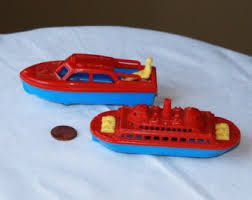
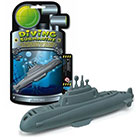
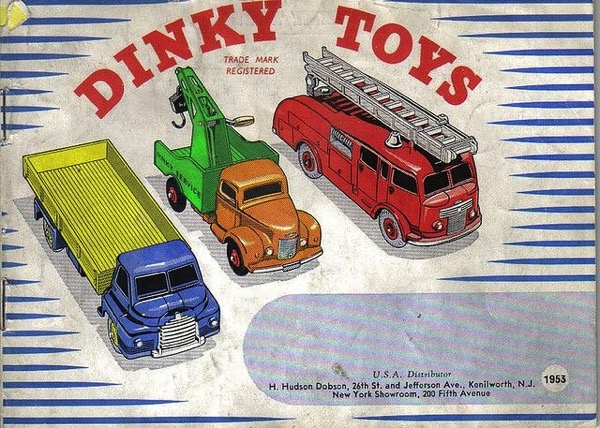
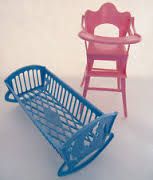
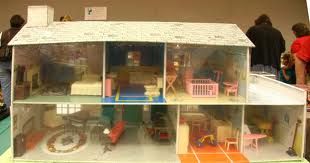
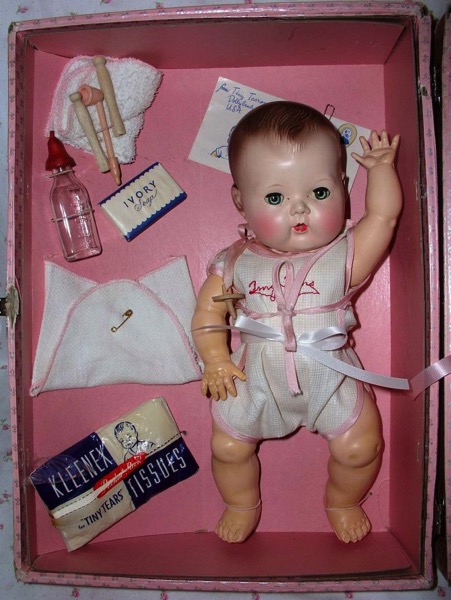
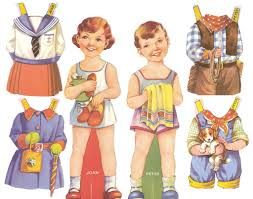
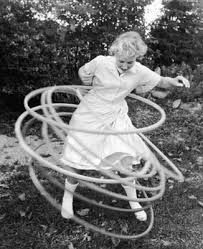
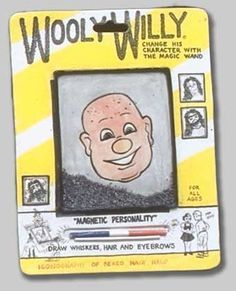
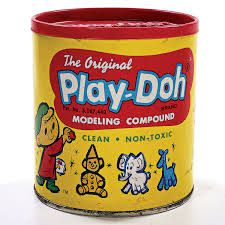
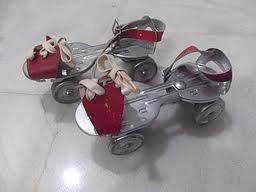
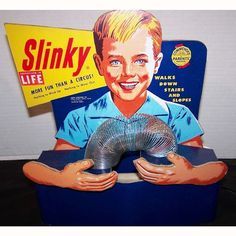
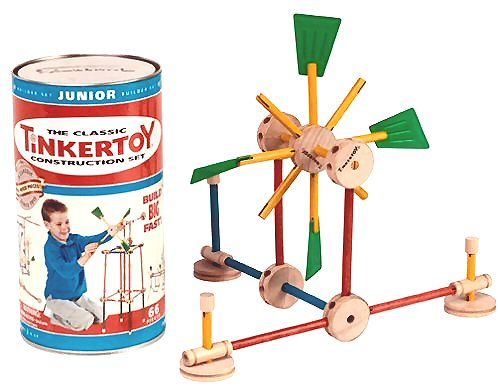
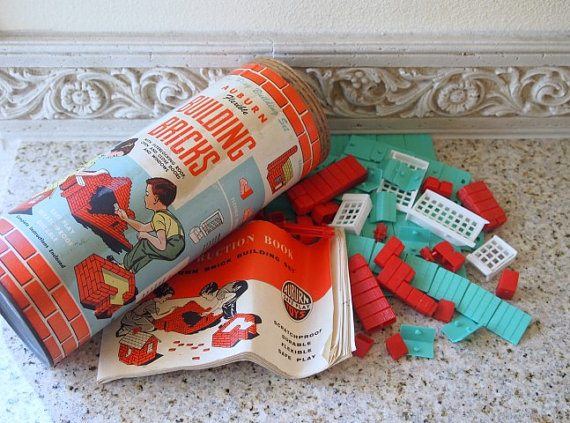
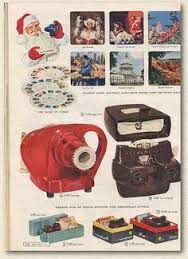
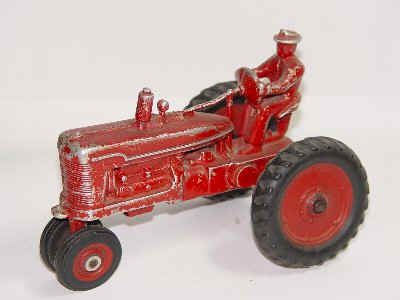
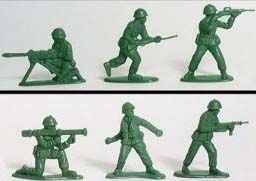
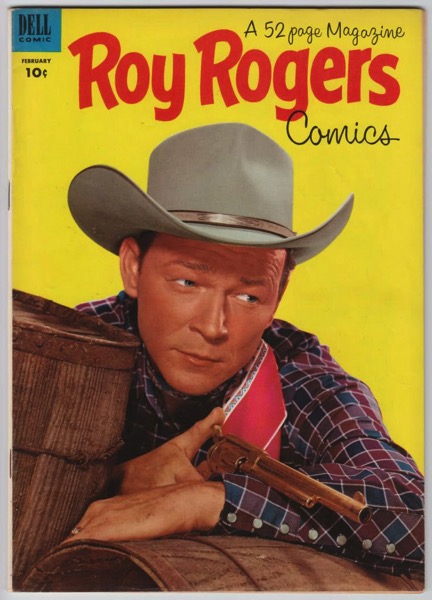
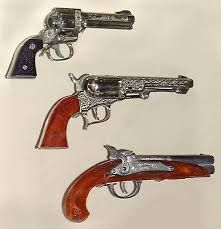
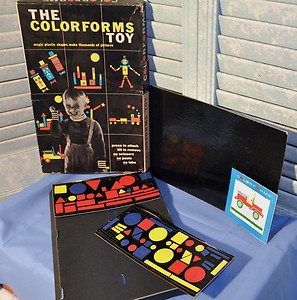
Quite a few of those are on the list for my childhood of the 60s. The only ones I’d add are Lincoln Logs and Etch-A-Sketch.
What a fun post! You are obviously younger than I am. My toys are more along the lines of the 40s. I do recognize some from the 50s though. Such good memories.
I remember our little wooden puzzles, coloring books and crayons, little plastic sewing machines, horse statues, stuffed toys (my favorite), Ginny dolls, Mr. Potato, the 8 ball, board games, Chinese checkers, puppets, Cootie, etc.
Love the trip down memory lane. x0x0x
I remember all those as well as all of Nora’s! Cootie! Almost forgot about that. But the one thing you listed that rings bells in my psyche is the Play Dough. For some reason I wanted that stuff so bad I could taste it one year. It seemed like I’d started asking for it in January for the following Xmas and by the time December 25th rolled around, it was there, under the tree and the joy I felt in owning that stuff was beyond description. I felt it just now when I saw your photo of it. I loved that stuff. It was so pliable and soft and squishy but indestructible and there was so much you could make with it – so many possibilities, and then just when you got something pretty made, SQUISH! back into a ball again. Oh how I loved that stuff. xxxx
Teri, I remember the Etch-A-Sketch came along when my younger siblings were young. Lots of the toys that were manufactured in the 50s were still around, and many were still being manufactured in the 60s.
Oh, and one more thing was in that same category – and now I can’t remember the name of it… there were plastic shapes, all different, and you could just stick them on things and make pictures, of every color… what was that called? Now I’m going to have to go searching… my memory is getting very poor lately…
Nora, some of our toys were at my Granny’s house, and were older than I was, but they were a lot of fun. Colouring books and crayons, we loved those too. I do also remember Mr. Potato Head, and Chinese Checkers, and Cootie… it all comes back!
Bex, your description of Play Dough reminds me of how I felt about Silly Putty. Play Dough was kind of every day when I was a kid but Silly Putty! You could shape it, make it into a bouncing ball, press it flat on a comic and it’d transfer the comic onto the Silly Putty. Oh, and now the bouncing has reminded me of Super Balls! So fun, bounce it as hard as you can and it might go as much as 20 ft high. 😀
Maggie, that little red boat you listed reminded me of a childhood bath toy. I don’t remember it being pushed around by baking soda, and I don’t think mine was, but I did have a little boat like that.
COLORFORMS! And here they are at amazon!
Wow, I am almost tempted to buy them… Do you remember these things. I have no idea why but I loved those things so much!
Oh, and one beloved toy from my childhood. Believe it or not, I LOVED Tonka Trucks!
Bex, what a beautiful description of the wonder of childhood. Play-Doh was a lot of fun. My Mom tried the homemade recipes, I think it was flour and salt and food colouring. It wasn’t quite the same, but we had fun with it.
Was that Colorforms Bex, I remember liking those a lot, but we only had one set between us. I am going to find a 1950s image and add it!
I remember Silly Putty, and the super balls!
Teri, Tonka Trucks!
One of the things the girls in my elementary school played with was rubber balls, put in a nylon stocking so that the ball was in the toe of the stocking. Then we would stand with our back to a brick wall, grab the thigh end of the stocking and recite poems to the rhythm we beat as we swung the ball from side to side, as it bounced off the brick wall on either side of us.
Another big recess event was playing marbles. We all had our “marble bags”, which inflated and deflated as we won and lost at the marble toss games.
Mr. Potato Head.
Mr. Potato Head
“Mr. Potato Head was almost little more than a forgotten cereal premium. But history has a way of being kind to the classics. And George Lerner was about to make history! During the World War II era, George Lerner enjoyed success as a well known inventor and designer. Just before 1950, he designed and produced a first generation set of plastic face pieces. The push pin shaped noses, ears, eyes and mouth parts could be pushed into fruits or vegetables to transform the food into an endless array of
magical anthropomorphic playmates.
The toy wasn’t an immediate hit however. There was still a World War 2 mentality to conserve resources. Toy companies didn’t think that customers would accept the idea of wasting a piece of food as a child’s toy. But after awhile, George finally sold the toy, for $5,000 dollars, to a cereal company, who planned to use the pieces as a premium giveaway in cereal boxes. But George knew that his new toy deserved a bigger shot. And that shot came in a meeting with a family owned New England manufacturer. Mr Lerner and the manufacture bought back the rights from the cereal company for $7,000.
Mr. Potato Head, one of the world’s most adored “personalities,” was “born” in 1952, at the Pawtucket, RI – based toy company, Hasbro, Inc., and began making history at an early age as the very first toy to be advertised on television. The original Mr. Potato Head contained only parts, such as eyes, ears, noses and mouths, and parents had to supply children with real potatoes for face-changing fun!”
Silly Putty
“Silly Putty was originally invented by James Wright, working at General Electric’s New Haven, Connecticut lab in 1943. At the time, the Allies were desperately short on rubber thanks to Japan invading various rubber producing countries in the Pacific Rim. This shortage on rubber was negatively affecting certain wartime production efforts. As a result of this, the U.S. government enlisted the aid of various companies to try and invent a synthetic rubber that could be made of readily available materials.
It was during one of these attempts to create synthetic rubber that Wright mixed boric acid and silicone oil, making the first Silly Putty, which initially became known as “Nutty Putty”. Although the goo produced by the mixture obviously wasn’t likely to make a good rubber substitute by itself, Wright did discover it had a variety of interesting properties, but he still couldn’t find a good practical use for it. Wright then sent samples of it to scientists all over the world to try to see if they could think up or discover a use for it that he missed. Unfortunately, nobody he sent it to could come up with a practical use for his putty either and the invention stayed in relative obscurity for around six years.
From 1943 to 1949, the primary use of Nutty Putty was just being passed around and played with at cocktail parties as a novelty item, for those few who got their hands on some. Eventually, this led to it coming to the attention of Ruth Fallgatter, who owned a toy store known as the “Block Shop”. With the help of marketing consultant Peter Hodgson, she put the item in her toy catalog as “bouncing putty”. The putty went on to be the second best selling item in the catalog, behind Crayola crayons.
Hodgson, who at the time was deeply in debt ($12,000), borrowed money to buy more of the putty and eventually the production rights, renaming it “Silly Putty”. He then hired some Yale college students to take the large quantity of putty and divvy it up into one ounce red plastic egg containers, which would sell for $1 each. Thanks in part to a “Talk of the Town” New Yorker article, as well as being debuted reasonably close to Easter, which was the inspiration for packaging it in an a plastic egg, Silly Putty became an instant nation-wide hit selling 250,000 units in the first three days and around six million units in the first year at $1 an egg, making it one of the fastest selling toys in history.”
Tonka Trucks
“In the late 1940s, the Mound Metalcraft Co., a small garden-implement business operating out of a Minnesota school basement, began making toy trucks. It started with steam shovels and cranes, and in just a year, it sold 37,000 units. Following this initial success, the group concentrated on making toys and changed the company name to Tonka (after Minnesota’s Lake Minnetonka). Tonka released its first pickup truck in 1955, followed by a Jeep in 1962 and the Mighty Dump Truck in 1965 — the latter becoming the company’s best-selling toy of the century. Thirty trucks have followed since Tonka’s first one left its tracks in the sandbox, and the company, now owned by Hasbro, is still represented in playgrounds around the world.”
Cootie
“The Game of Cootie is a children’s roll-and-move tabletop game for two to four players. The object is to be the first to build a three-dimensional bug-like object called a “cootie” from a variety of plastic body parts. Created by William Schaper in 1948, the game was launched in 1949 and sold millions in its first years. In 1973, Cootie was acquired by Tyco Toys, and, in 1986, by Hasbro subsidiary Milton Bradley. The game was given a new look and continued to enjoy commercial success. Several companies published cootie games in the first half of the twentieth century but only Schaper’s featured a free-standing, three-dimensional cootie. In 2003, Cootie was named to the Toy Industry Association’s “Century of Toys List”.
The object of the original 1949 game is to be the first player to build a “cootie” piece by piece from various plastic body parts[1][2] that include a beehive-like body, a head, antennae, eyes, a coiled proboscis, and six legs.[3] Body parts are acquired following the player’s roll of a die, with each number on the die corresponding to one of the body parts.[1] The body corresponds to one, the head to two, three to the antennas (feelers), four to the eye, five to the proboscis (mouth), and six to the leg.[4] The first part to be acquired must be the body, and then the head. All other body parts may then be acquired in any order. When a player acquires a part, an additional throw of the die is allowed in an attempt to acquire another part. The winner is the first player to completely assemble a cootie.”
Ginny Doll
“1948-1950 Vogue Ginny doll is 7 1/2-8″ tall, (named after Jennie Graves daughter Virginia ie. Ginny), all hard plastic, toddler type jointed body, wig, molded hair under the wig, PE painted side glancing eyes, closed mouth, marked on head: Vogue, and on back: Vogue Doll, clothing is also marked Vogue Doll.
1950-1953 Vogue Ginny doll, 7 1/2-8″ tall, hard plastic, jointed body, sleep eyes, PL painted lashes, mohair wig with gauze strip, marked on head: Vogue, and on back: Vogue Doll, clothing is also marked Vogue Doll.
1953 Vogue Ginny doll, 7 1/2-8″ tall, hard plastic, black doll, sleep eyes, PL painted lashes, black mohair wig, jointed at neck, arms and hips, straight leg non-walker.
1954 Vogue Ginny doll, 7 1/2-8″ tall, hard plastic, jointed body, SLW straight leg walker, wig, sleep eyes, PL painted lashes, (PLW abbreviation of Painted Lash Walker), closed mouth, marked on body: Ginny, Vogue Dolls Inc, Pat. Pend., Made in USA, shown in the Queen Elizabeth Coronation outfit.
1955-1956 Vogue Ginny doll, 7 1/2-8″ tall, hard plastic, jointed body, SLW straight leg walker, wig, sleep eyes, molded lashes, (MLW abbreviation of Molded Lash Walker), closed mouth, marked on head: Ginny Vogue Dolls, Inc., marked on body: Vogue Dolls Inc, Pat 2687594, Made in USA.
1957-1962 Vogue Ginny doll, 7 1/2-8″ tall, hard plastic, jointed body, BKW bent knee walker, wig, sleep eyes, molded eyelashes, closed mouth, marked on head Vogue, on body: Vogue Dolls Inc, Pat 2687594, Made in USA.
1960 Vogue Ginny doll, 36″ tall, walker type, carried an Ginny 8″ doll just like her, unmarked. See below for her photo and description.
1963-1965 Vogue Ginny doll, 7 1/2-8″ tall, vinyl head, plastic body, jointed body, rooted hair, sleep eyes, closed mouth, marked on head: Ginny, on body: Vogue Dolls Inc, Pat 2687594, Made in USA.
1965-1971 Vogue Ginny doll, 7 1/2-8″ tall, all vinyl, rooted hair, sleep eyes with molded eyelashes, jointed body at the neck, arms and hips, with straight legs a non-walker.
1972-1977 Vogue Ginny doll, 7 1/2-8″ tall, all vinyl, jointed body, rooted hair, sleep eyes, closed mouth, marked on head: GINNY, on body: Vogue Dolls © 1972, Made in Hong Kong.
1978-1982 Vogue Ginny doll, 8-9″ tall, all vinyl, jointed body, rooted hair, sleep eyes (Sasson), the later skinny Ginny dolls have painted eyes (Lensey), closed mouth, marked: Made in Hong Kong”
Chinese Checkers
“Chinese checkers (US spelling; UK Chinese chequers) is a strategy board game which can be played by two, three, four, or six people, playing individually or with partners.[2] The game is a modern and simplified variation of the game Halma.
The objective is to be first to race one’s pieces across the hexagram-shaped gameboard into “home”—the corner of the star opposite one’s starting corner—using single-step moves or moves which jump over other pieces. The others continue playing to establish 2nd, 3rd, 4th, 5th, and last place finishers. Like other skill-based games, Chinese checkers involves strategy. The rules are simple, so even young children can play.
Two boys playing Hop Ching Checkers, Montreal, July 1942
Despite its name, the game is not a variation of checkers, nor did it originate in China or any part of Asia (on the other hand, the game known as “Chinese chess”, or xiangqi, is from China). The game was invented in Germany in 1892 under the name “Stern-Halma” as a variation of the older American game Halma. The “Stern” (German for star) refers to the board’s star shape (in contrast to the square board used in Halma). The name “Chinese Checkers” originated in the United States as a marketing scheme by Bill and Jack Pressman in 1928. The Pressman company’s game was originally called “Hop Ching Checkers”.
The game was introduced to Chinese-speaking regions mostly by the Japanese.”
Etch A Sketch
“Etch A Sketch is a mechanical drawing toy invented by André Cassagnes of France and subsequently manufactured by the Ohio Art Company.[1]
An Etch A Sketch has a thick, flat gray screen in a red plastic frame. There are two knobs on the front of the frame in the lower corners. Twisting the knobs moves a stylus that displaces aluminum powder on the back of the screen, leaving a solid line. The knobs create lineographic images. The left control moves the stylus horizontally, and the right one moves it vertically.
The Etch A Sketch was introduced near the peak of the Baby Boom in 1960, and is one of the best known toys of that era. It was inducted into the National Toy Hall of Fame at The Strong in Rochester, New York in 1998. In 2003, the Toy Industry Association named Etch A Sketch to its Century of Toys List, a roll call commemorating the 100 most memorable and most creative toys of the 20th century…
The toy can be considered a simplified version of a plotter. The inside surface of the glass screen is coated with aluminium powder, which is then scraped off by a movable stylus, leaving a dark line on the light gray screen. The stylus is controlled by the two large knobs, one of which moves it vertically and the other horizontally. Turning both knobs simultaneously makes diagonal lines. To erase the picture, the user turns the toy upside down and shakes it. Doing this causes polystyrene beads to smooth out and re-coat the inside surface of the screen with aluminum powder. The “black” line merely exposes the darkness inside the toy. Filling in large “black” areas allows enough light through to expose parts of the interior.”
Super Ball
“In the early 1960s, chemical engineer Norman Stingley accidentally created a plastic that he couldn’t stop from bouncing. Wham-O purchased the product, renaming it the SuperBall, and the world’s best-selling bouncy ball was born. Made from the compound polymer zectron, which gives it that supreme elasticity, more than 20 million SuperBalls were sold in the 1960s. At the craze’s height, Wham-O was producing 170,000 balls per day. They were so popular that McGeorge Bundy, National Security Adviser to then President Lyndon Johnson, bought them for his staff as stress relievers.”
I remember Cooties but didn’t realize they went further back than the 60s. When I was young, Chatty Cathy was an important doll – and, of course, Barbie. But I wasn’t all that interested in playing with dolls. I tended to prefer playing with balls, Tonka Trucks, carving soap, reading, and trying to make birdhouses. I was a very eclectic child. 😉
Bex, I loved Colorforms too! The ones we had were dolls that we cold dress up, like paper dolls but without having to cut anything out, or use tabs to keep the clothing on the cutout doll.
Teri, my younger cousins had Chatty Kathy dolls, they were quite the thing!
Chatty Kathy
“Chatty Cathy was born in 1959 by Mattel INC.
Elliot and Ruth Handler along with their friend Harold Matson formed Mattel INC in 1945. The company sold doll furniture and musical toys in the beginning. Later on many different dolls and toys. “You Can Tell It’s Mattel It’s swell” is Mattel’s motto.
Jack Ryan with the help of his brother Jim created Chatty Cathy’s pull string voice box in 1959 and applied for a patent on the doll in Feb of 1960.
Also in 1959 the sculpture and design of the Chatty Cathy head was done by Tony Hower?? (I don’t have his last name). He designed the doll head to look like his little girl.
June Foray did the voice for Chatty Cathy in 1960.”
Barbie Doll
“The Barbie doll was invented in 1959 by Ruth Handler (co-founder of Mattel), whose own daughter was called Barbara. Barbie was introduced to the world at the American Toy Fair in New York City. Barbie’s job was teenage fashion doll. The Ken doll was named after Ruth’s son and was introduced two years after Barbie in 1961.
Barbie Facts & Technology
The full name of the first doll was Barbie Millicent Roberts, from Willows, Wisconsin. Barbie’s job was that of teenage fashion model. However, the doll has been made in versions connected to over 125 different careers.”
I’m thinking more along the lines of the baby Ginny doll. Did anyone have her? I adored mine. I kept her for so long too. Not sure what happened to her unless she was stolen when our storage unit was robbed way back when.
Does anybody remember what the toy was called that was a plastic film sheet that adhered to the TV screen so one could trace on it?
Not Mr. Potato but Mr. Potato Head, of course. He was quite popular.
Nora, I am curious about the plastic film sheet adhering to a TV screen, it doesn’t sound familiar. I didn’t have a Ginny Doll, but from the looks of her I think I would have loved her!
Nora, I think I found it! This is new to me, wow!
Winky Dink and You
“Winky Dink and You was a CBS children’s television show that aired from 1953 to 1957, on Saturday mornings at 10:30 a.m. Eastern / 9:30 Central. It was hosted by Jack Barry and featured the exploits of a cartoon character named Winky Dink (voiced by Mae Questel) and his dog Woofer, with sound effects provided by Joseph Scholnick. The show, created by Harry Prichett, Sr. and Ed Wyckoff, featured Barry and his sidekick, the incompetent Mr. Bungle (Dayton Allen), introducing clips of Winky Dink, noted for his plaid pants, tousled hair, and large eyes.
Praised by Microsoft mogul Bill Gates as “the first interactive TV show”,[1] the show’s central gimmick was the use of a “magic drawing screen”, which was a large piece of vinyl plastic that stuck to the television screen via static electricity. A kit containing the screen and various Winky Dink crayons could be purchased for 50 cents. At a climactic scene in every Winky Dink short, Winky would arrive upon a scene that contained a connect the dots picture. He would then prompt the children at home to complete the picture, and the finished result would help him continue the story. Examples include drawing a bridge to cross a river, an axe to chop down a tree, or a cage to trap a dangerous lion.
Another use of the interactive screen was to decode messages. An image would be displayed, showing only the vertical lines of the letters of the secret message, which viewers at home would quickly trace onto their magic screen. A second image would then display the horizontal lines, completing the text.
A final use of the screen was to create the outline of a character with whom Jack Barry would have a conversation. It would seem meaningless to viewers without the screen, further encouraging its purchase.”
A video from the 50s: Winky Dink and You
I was a fan of nearly all these toys – not that I had them all. 🙂 Winky Dink – OMG! Colorforms – OMG! Wasn’t there something called a spirograph? (I should’ve Googled before typing this.)
I had a Ginny doll. She was so cute and age appropriate.
Does anyone remember the Magic 8 Ball? :))
What a wonderful thread of pure joy you’ve created here, Maggie!
I thought of Mr. Potato Head because over Thanksgiving I’ve planned a game of Tricky Turkey. (Dirty Santa with a different seasonal name.) The game where people take turns opening gifts and then others can steal. (Partial description of the rules.) Anyway, one of the gifts I purchased was Mr. Potato Head. I saw him at a local store and couldn’t resist. Mr. Potato Head still makes me smile!
Spirograph
“Spirograph was invented by Denys Fisher in the early sixties. Spirograph’s geometric patterns were beautifully in tune with the swinging sixties. Like the Lava Lamp, the timing of its launch in 1965 was perfect. Spirograph won Toy of the Year and was the top selling toy in America in 1967. It is still available today, as MB Spirograph in the UK and Hasbro Spirograph in the US.
Original Denis Fisher Spirograph set, 1965
Denys Fisher was an engineer who supplied precision components to NATO in the early sixties. His passion though, was a Victorian idea for creating patterns using cogs and wheels. He tried to improve on what the Victorians did using Meccano gears during the Christmas break of 1962. However, his first attempt was unsuccessful. His original idea came whilst he listening to Beethovens Ninth Symphony. His inspiration was to use a series of perforated cogs and racks, into which a pencil could be inserted. Denys Fisher’s original intention was to market Spirograph as draftsman’s tool, but he later decided it would sell better as a toy.”
Magic 8 Ball
“The Magic 8 Ball is a toy used for fortune-telling or seeking advice, manufactured by Mattel and developed in the 1950s. It is often used in fiction, often for humor related to it giving very accurate, very inaccurate, or otherwise statistically improbable answers.
An 8-ball was used as a fortune telling device in the 1940 Three Stooges short, You Nazty Spy, in which it was referred to as a “magic ball”. While Magic 8 Ball didn’t exist in its current form until 1950, the functional component was invented by Albert C. Carter, who was inspired by a spirit writing device that was used by his mother, Mary, a Cincinnati clairvoyant. When store owner Max Levinson was approached by Carter about stocking the device, he called in his brother-in-law Abe Bookman, a graduate of Ohio Mechanics Institute. In 1944, Carter filed for a patent for his device, assigning it to Bookman, Levinson, and another partner in what came to be Alabe Crafts, Inc. (Albert and Abe) in 1946. Under the Alabe name, they marketed and sold the device as The Syco-Seer. Carter died sometime before the patent was granted in 1948. Bookman soon made improvements to the Syco-Seer and in 1948, it was encased in an iridescent crystal ball. Though unsuccessful, the revamped product caught the attention of Chicago’s Brunswick Billiards. In 1950 they commissioned Alabe Crafts to make a version in the form of a traditional black and white 8-ball.”
Reenie and Nora, I knew the name of the game Magic 8 Ball, but we didn’t have one. The Spirograph came into the house for my younger siblings (1967 invention), of course I had a go, and spent time playing with them.
I had both Spirograph and, many years later, the Magic 8 Ball. Loved the Spirograph and spent many hours making designs with it!
Maggie,
Wow, you went all out. Thank you for taking the time to research all of these toys. “Winky Dink”….that’s the one.
I loved the Spirograph too Tops and the 8 Ball fascinated me. Magic!
Your welcome Nora! My motivation is the fact that web sites disappear, and links will eventually lead nowhere and mean nothing. I would like my Grandbabies to be able to see this someday, and I try to keep enough information in it to make it stand alone. Of course, they might not be interested until they are my age, lol!
I have been having a lot of fun with this!
It’s been a really enjoyable thread, Maggie. Makes my heart smile to remember those times.
Thanks Teri, it wouldn’t have been the same without the rest of you here! 🙂
Maggie,
An excellent idea for the Grandbabies! At some point in life they will be interested.
Thanks for the trip through memory lane. I remember slinkies, etch a sketch, Barbie dolls, playdough, Chinese checkers and spirograph.